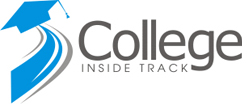Pre Med for B Students: Five Colleges to Consider with CIT Consultant Suzy Fallon
Do you remember Doogie Houser M.D, a child prodigy who earns a perfect score on the SAT at the age of six, flies through high school in nine weeks, graduates from an Ivy League college at age 10, finishes medical school at the ripe old age of 14, and is the youngest licensed doctor in the country? Doogie was the lead character of a popular sitcom show thirty years ago, and I was reminded by Wikipedia that part of the opening title sequence hysterically stated he “can’t buy beer… [but] can prescribe drugs! If you don’t know who I’m talking about, ask your parents, and I guarantee they will! As fun as that entertaining yet crazy show was, I argue that it may still be influencing the notion that you have to be an A student to study pre-med. I’m here to tell all B students that’s not true!
There are a lot of reasons why bright, engaging, and motivated students graduate high school with a B (2.7 – 3.3) instead of an A average. If you are the former and want to study pre-med in college, then it’s important to have a college application list that includes schools looking for you and schools that will support you in your efforts to get into medical school. You will notice that these colleges all address the question, “Is this a good college for pre-med? – Three Ways to Know” we covered in a companion article.
Here are five colleges that do this:
Gustavus Adolphus College, located in Saint Peter, MN, is entirely focused on its 2250 undergraduate students. The Office of Health Professions provides help with course planning, real-life experience opportunities, and graduate applications. The Gustavus Mentoring Program connects students with Gustie grads and the Challenge Curriculum focuses on written and verbal communication skills; the ability to work within teams and across cultural, geographic, and language boundaries; and creative, multidisciplinary problem-solving of open-ended problems – all skills a successful health practitioner will need.
Muhlenberg College, located in post-industrial Allentown, PA, should be on every student’s list if they are pre-med, regardless of GPA. With about 2000 undergrads and located about fifty-five miles north of Philadelphia, this residential college is keenly focused on pre-professional education, and its pre-health program is a standout. Over the past five years, 92% of medical and dental school applicants have been accepted. Wow. Between clinical and research opportunities, advising resources, interesting majors, and partnerships with graduate medical programs, Muhlenberg is definitely worth checking out.
The University of Scranton, with nearly 3600 undergrads located in downtown Scranton, PA, is another standout when it comes to pre-health advising and academics. The Office jokes aside, the campus boasts state-of-the-art buildings and resources and is within a mile of three hospitals. Scranton has a robust and fully developed Pre-Medical and Pre-Health Program. According to their site, “Of the more than 1,200 applicants to doctoral health professions schools over the past 20 years, nearly 80% were accepted to schools of medicine, dentistry, veterinary medicine, podiatry, optometry and pharmacy.” Note the publishing of this data is not the norm; very few colleges are as transparent as the University of Scranton (and Muhlenberg College.) As a Jesuit college, University of Scranton embraces traditions of strong teaching, community engagement, and promotion of justice. Quick fact: many students end up minoring in philosophy because it’s easy to do so after completing the school’s first-year seminar experience. The ability to think creatively, problem solve, and communicate effectively likely adds a lot of value to their medical school applications.

The College of Wooster’s residential campus is home to approximately 2000 undergrads and is highly regarded and nationally recognized for its commitment to mentored research and its international focus. Located in the charming college town of Wooster, OH, the college is known for mentorship, collaboration, and independent thinking, preparing students to be global thinkers and leaders. While Wooster’s percentage of med school acceptances mirrors the national average of about 41%, their Pre-Health Advising Program with a focus on experiential learning and community engagement, will serve med school applicants quite well if they engage with their program.
Kalamazoo College is not only fun to say, but it’s home to nearly 1400 undergrads in the vibrant city of Kalamazoo, MI, and is equidistant to Detroit and Chicago. “K” is well known and regarded nationally and globally for its inventive K-plan, of which experiential learning and an integrated senior project are cornerstones. The Career in Health and Medicine office provides students with one-on-one help regarding course selection, volunteer involvement, health-related experiences as well as exploring growth year opportunities. Their APP (Application Prep Program) is well thought out and provides students with a clear process to navigate.
Regardless of your high school GPA, it’s important to engage in activities while in high school that support your interest in the field of health. If you haven’t done so already, please check out our excellent article on that topic. It’s also going to be important to have real-life experience while in college to demonstrate your commitment to and understanding of the healthcare world.
Of course, this list is not exhaustive! Your CIT Consultant can help you find colleges that have excellent programs throughout the country. You will note, however, that many of the best programs for B students tend to be on the smaller size. Why? Because there is more scaffolding in place to help students be successful. Remember, you might have been a B student in high school, but you need to have a strong college GPA to be a competitive applicant. Medical and other health-related profession schools are looking for students who have excelled in college, and oftentimes, being the big fish in a small pond is a strategic advantage.
